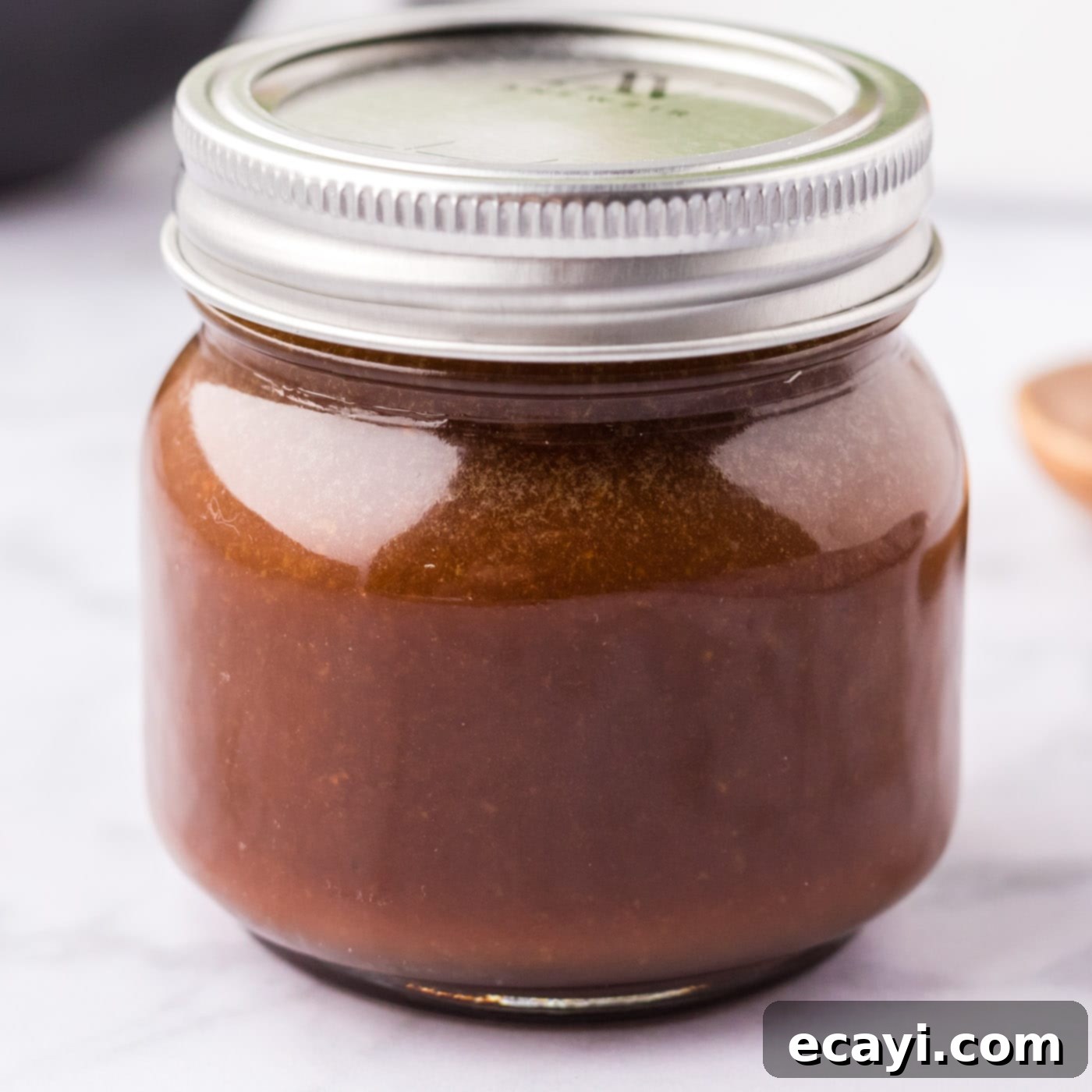Effortlessly Delicious: The Ultimate Homemade Teriyaki Sauce Recipe
Unlock a world of rich, sweet, and tangy flavors with this incredibly easy homemade teriyaki sauce. Crafted with a perfect blend of soy sauce, oyster sauce, ginger, and garlic, it delivers an irresistible sticky glaze that transforms any dish. Forget store-bought versions; this recipe promises a fresher, more vibrant taste, free from artificial additives, and ready to elevate your cooking.
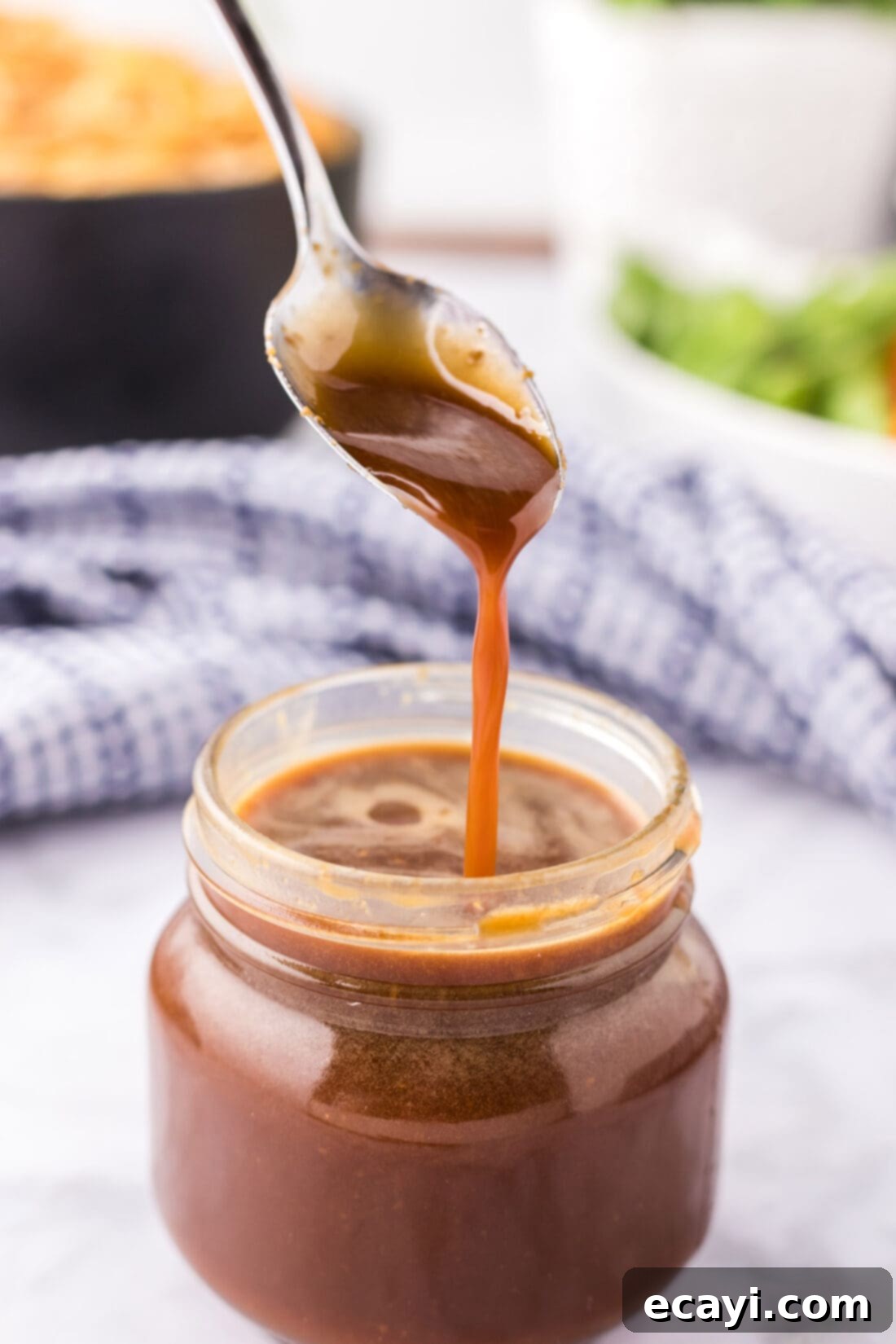
Teriyaki sauce is a culinary staple, renowned for its balance of sweet and savory notes, with a signature umami depth that enchants taste buds. While bottled options are widely available, creating your own teriyaki sauce at home is a game-changer. This recipe is designed for maximum flavor with minimal effort, ensuring a smooth, cohesive sauce that’s far superior to anything you’ll find on a supermarket shelf.
The beauty of homemade teriyaki lies in its freshness and the ability to control every ingredient. This particular recipe stands out for its simplicity and the rich, complex profile achieved through a thoughtful combination of traditional and complementary elements. Whether you’re a seasoned chef or a beginner in the kitchen, this guide will walk you through crafting a versatile sauce that will become your go-to for countless meals.
Why This Homemade Teriyaki Sauce Will Become Your Favorite
Imagine having a gourmet-quality teriyaki sauce ready in mere minutes, without any lengthy cooking or complicated steps. That’s exactly what this recipe offers. With just a quick blend using an immersion blender, you’ll achieve a perfectly emulsified, flavorful sauce that’s incredibly versatile. It’s the ultimate kitchen hack for busy weeknights or when you simply crave that authentic, savory-sweet kick.
Beyond its incredible speed, this homemade teriyaki sauce shines for several reasons:
- Unmatched Flavor: The combination of fresh ginger and garlic (or their convenient jarred counterparts), along with the distinct profiles of soy and oyster sauce, creates a multi-layered flavor experience that store-bought sauces often lack. The honey and brown sugar add a natural sweetness that perfectly balances the savory and tangy components.
- Effortless Preparation: No need for simmering or constant stirring. Simply combine the ingredients and blend. This hands-off approach makes it perfect for those who want delicious results without the fuss.
- Superior Texture: The immersion blender ensures a smooth, uniform consistency, which then transforms into a beautiful, sticky glaze when heated. You control the thickness, adding cornstarch only when you’re ready to use it, preventing any premature gelling.
- Incredible Versatility: This sauce isn’t a one-trick pony. It’s fantastic for spooning over cooked meats like chicken, beef, or salmon. Toss it with noodles for a quick and flavorful meal, integrate it into your favorite stir-fries, or use it as a delightful dipping sauce for appetizers like chicken wings or spring rolls. Its adaptability makes it an essential condiment for any kitchen.
- Long Shelf Life: Unlike some homemade sauces, this teriyaki sauce keeps exceptionally well in the refrigerator for up to two months. This makes it ideal for meal prepping, allowing you to whip up various Asian-inspired dishes throughout the week with ease. Always having this flavorful sauce on hand means you’re just moments away from adding a vibrant, punchy flavor to almost any dish.
This recipe truly works by combining simplicity with incredible depth of flavor and practical storage, making it an indispensable addition to your culinary repertoire.
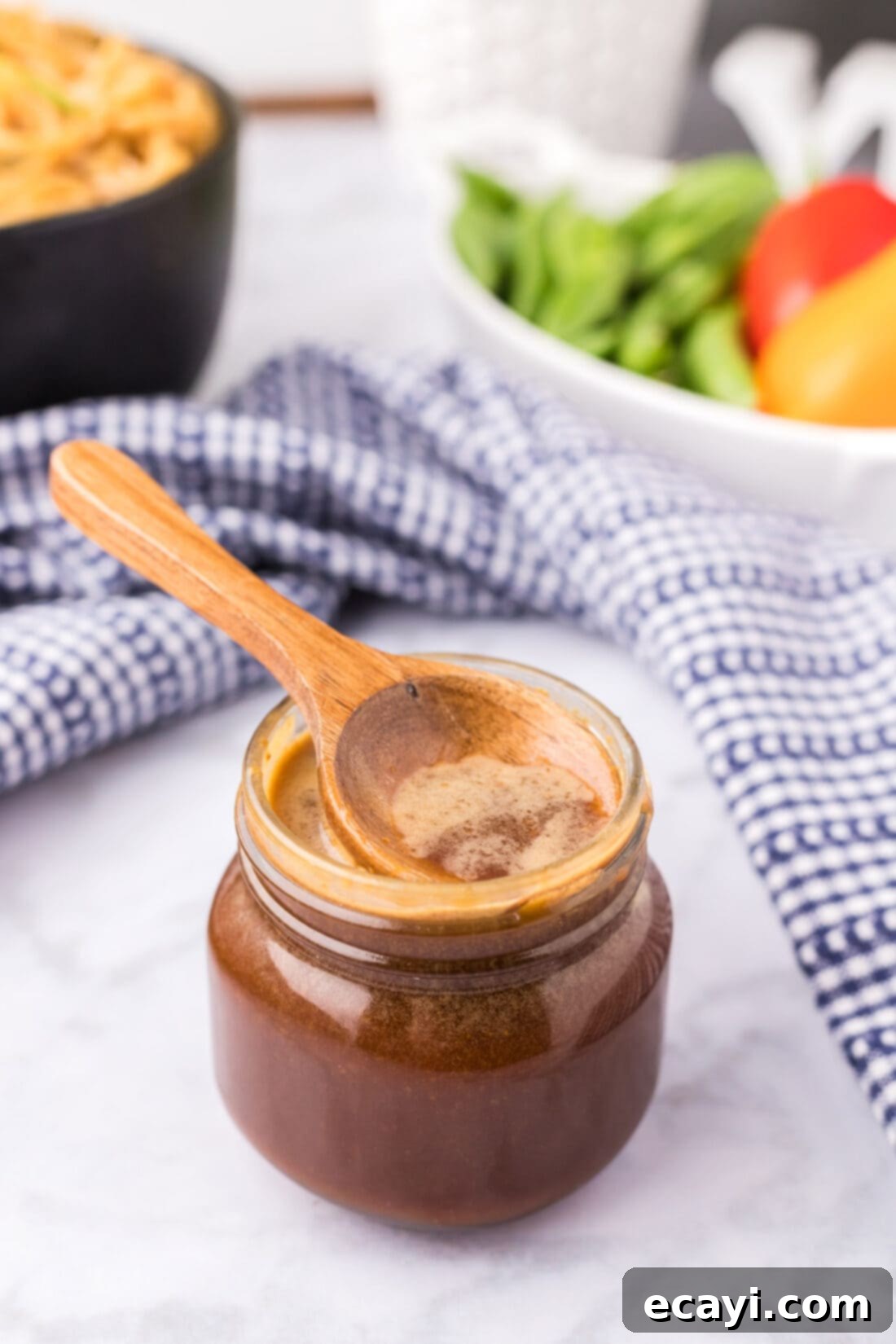
Essential Ingredients for Your Homemade Teriyaki Sauce
Creating this magnificent teriyaki sauce requires a selection of readily available ingredients that, when combined, produce a truly authentic and satisfying flavor. You’ll find all exact measurements and detailed instructions in the printable recipe card at the very end of this post, but let’s explore the key components that make this sauce so special.
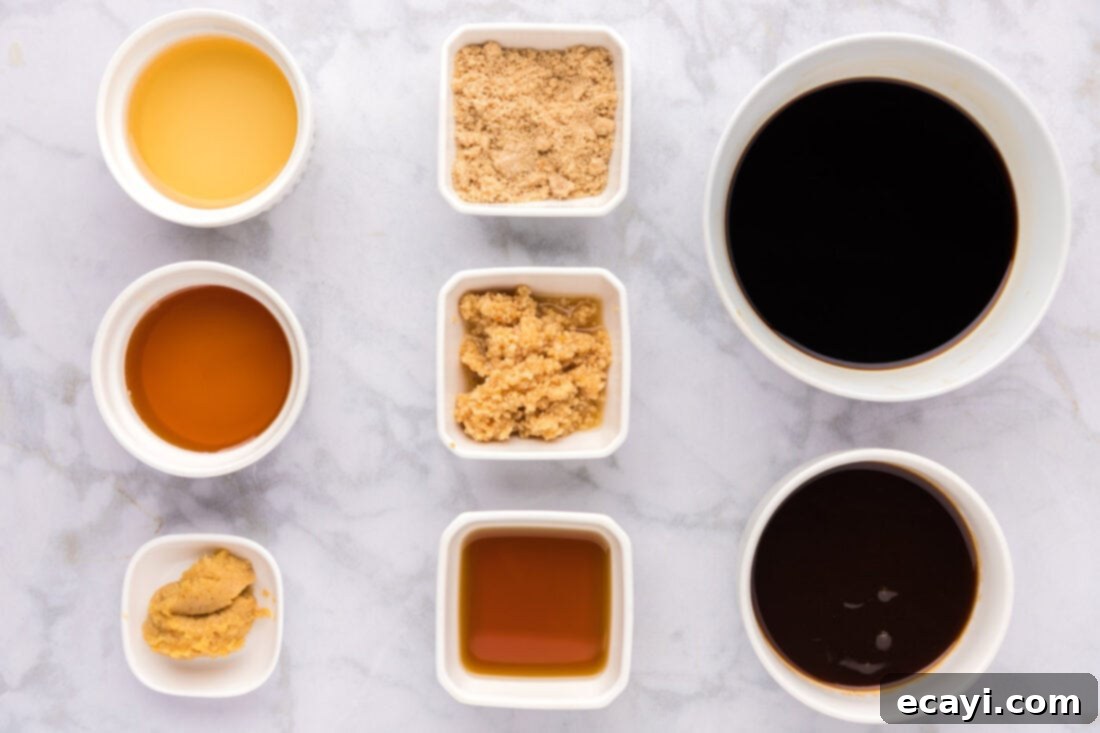
Decoding the Flavors: Ingredient Insights and Smart Swaps
Each ingredient in this teriyaki sauce plays a crucial role in building its complex flavor profile. Understanding their individual contributions and potential substitutions can help you tailor the sauce to your preferences and available pantry items.
- Soy Sauce: This is the foundation of any teriyaki sauce, providing the essential umami and salty base. We highly recommend using low sodium soy sauce to better control the overall saltiness of your final product. Regular soy sauce can make the sauce overpowering. If you only have regular soy sauce, consider reducing the amount slightly or adding a touch more sweetener and vinegar to balance. For a gluten-free option, tamari works beautifully as a direct substitute.
- Oyster Sauce: A key ingredient in our recipe, oyster sauce adds a unique depth of flavor, a thicker consistency, and a subtle sweetness that distinguishes this teriyaki. It’s less salty than soy sauce and contributes a wonderful richness. If you don’t have oyster sauce, you can substitute it with more soy sauce, but be aware that the resulting sauce will likely be thinner and potentially saltier. You might need to increase the brown sugar slightly to compensate for the lost sweetness and use a bit more cornstarch when thickening to achieve the desired consistency. For a vegetarian alternative, mushroom-based “oyster sauce” substitutes are available.
- Sweeteners (Honey and Brown Sugar): This dynamic duo provides the iconic sweetness of teriyaki sauce, balancing the savory and tangy notes.
- Honey: Contributes a delicate, floral sweetness and a lovely stickiness to the glaze. Its liquid form integrates smoothly into the sauce.
- Brown Sugar: Adds a deeper, caramel-like sweetness and helps build that desirable sticky texture. Its molasses content also complements the other robust flavors.
You can adjust the ratios to your liking; for a sweeter sauce, add a bit more of both, or for a less sweet profile, reduce them slightly. Maple syrup can be a good substitute for honey, offering a different but complementary sweetness.
- Garlic and Ginger: These aromatic powerhouses are non-negotiable for authentic teriyaki flavor. They infuse the sauce with warmth, pungency, and a fresh zing.
- Fresh Garlic and Ginger: If you have them on hand, fresh is always fantastic. Finely mince the garlic and grate or finely chop the ginger for the best flavor release.
- Jarred Minced Garlic and Chopped Ginger: For ultimate convenience, we often opt for jarred versions. They save significant prep time without compromising too much on flavor, especially when blended into a sauce. Just ensure they are of good quality.
Using powdered versions is not recommended, as they won’t provide the same fresh, vibrant taste.
- Sesame Oil: A drizzle of sesame oil adds a nutty, aromatic richness that is characteristic of many Asian dishes. Use toasted sesame oil for a more intense flavor. A little goes a long way, so don’t be tempted to add too much, as it can overpower the other ingredients.
- Rice Vinegar: This ingredient is crucial for adding a bright, acidic tang that cuts through the sweetness and richness, making the sauce more balanced and appealing. Do not substitute with other vinegars like white vinegar or apple cider vinegar, as their flavor profiles are too strong and distinct for teriyaki.
By understanding these components, you can confidently prepare this delicious sauce and even experiment with minor adjustments to perfectly suit your palate.
Crafting Your Sauce: Step-by-Step Guide to Homemade Teriyaki
These step by step photos and instructions are here to help you visualize how to make this recipe. You can Jump to Recipe to get the printable version of this recipe, complete with measurements and instructions at the bottom.
- Combine All Ingredients: In a tall measuring cup, a large jar, or a bowl suitable for blending, combine the low sodium soy sauce, sesame oil, oyster sauce, honey, rice vinegar, chopped ginger, minced garlic, and brown sugar. Ensure all the ingredients are present and ready for blending.
- Blend to Perfection: Insert an immersion blender into the mixture. Begin blending on a low setting and gradually increase the speed until all ingredients are thoroughly combined and the sauce is smooth. The goal is to emulsify the ingredients and ensure the ginger and garlic are finely incorporated, distributing their flavors evenly throughout the sauce. At this stage, the sauce will be thin; we are NOT adding cornstarch yet, as its thickening power is best reserved for when you’re ready to use the sauce in a hot application. If you don’t have an immersion blender, a regular blender or food processor will also work well, just make sure to blend until completely smooth.
- Storage for Future Enjoyment: Once blended, transfer the teriyaki sauce to an airtight container or a clean glass jar. Seal it tightly and store it in the refrigerator. This sauce keeps beautifully for up to 2 months, making it an excellent component for advanced meal preparation.
- Using and Thickening Your Sauce: When you’re ready to use your homemade teriyaki sauce, remember that it needs to be thickened. For a family-sized meal (e.g., about 1 lb of cooked meat or noodles), start with approximately 1/2 cup of your prepared teriyaki sauce in a skillet. To thicken the sauce, create a slurry: whisk together one tablespoon of cornstarch with about 1/4 cup of cold water until smooth. Pour this cornstarch slurry into the skillet with your teriyaki sauce and cooked ingredients. Bring the mixture to a gentle simmer, stirring continuously, until the sauce thickens to your desired glaze consistency. This method ensures your sauce is perfectly thick and glossy when served hot.
Frequently Asked Questions & Expert Tips for Perfect Teriyaki Sauce
This sauce can be kept in a sealed, airtight container or jar in the refrigerator for up to 2 months. Ensure the container is clean and tightly sealed to maintain freshness and prevent contamination. You can also freeze portions of the sauce in ice cube trays or small freezer-safe containers for even longer storage (up to 3-4 months). Thaw in the refrigerator overnight before use.
Expert Tips for Success:
- Achieving the Perfect Thickness: The key to a glossy, sticky teriyaki glaze is proper thickening. Always make a cornstarch slurry with cold water before adding it to hot liquid. This prevents lumps. Add it gradually to your skillet and simmer, stirring, until the desired thickness is reached. If it gets too thick, you can thin it out with a tablespoon or two of water or broth.
- Taste and Adjust: Before storing or serving, always taste your sauce. Is it too salty? A touch more honey or brown sugar can help balance it. Not tangy enough? Add a small splash more rice vinegar. Too sweet? A tiny bit more soy sauce or vinegar. Adjusting to your personal preference is the joy of homemade.
- Fresh vs. Jarred Aromatics: While jarred garlic and ginger offer convenience, fresh garlic and ginger will provide the most potent and vibrant flavor. If you opt for fresh, ensure they are very finely minced or grated to integrate smoothly into the sauce.
- Enhance with Spice: For a touch of heat, consider adding a pinch of red pepper flakes or a dash of sriracha to the sauce before blending. Start small and add more to taste.
- Zesty Brightness: A tiny bit of orange or lime zest can add a wonderful bright note to the sauce, especially if you’re planning to use it with fish or chicken.
- Shake Before Use: If the sauce has been stored for a while, the ingredients might separate slightly. Give it a good shake or stir before using to ensure everything is well combined again.
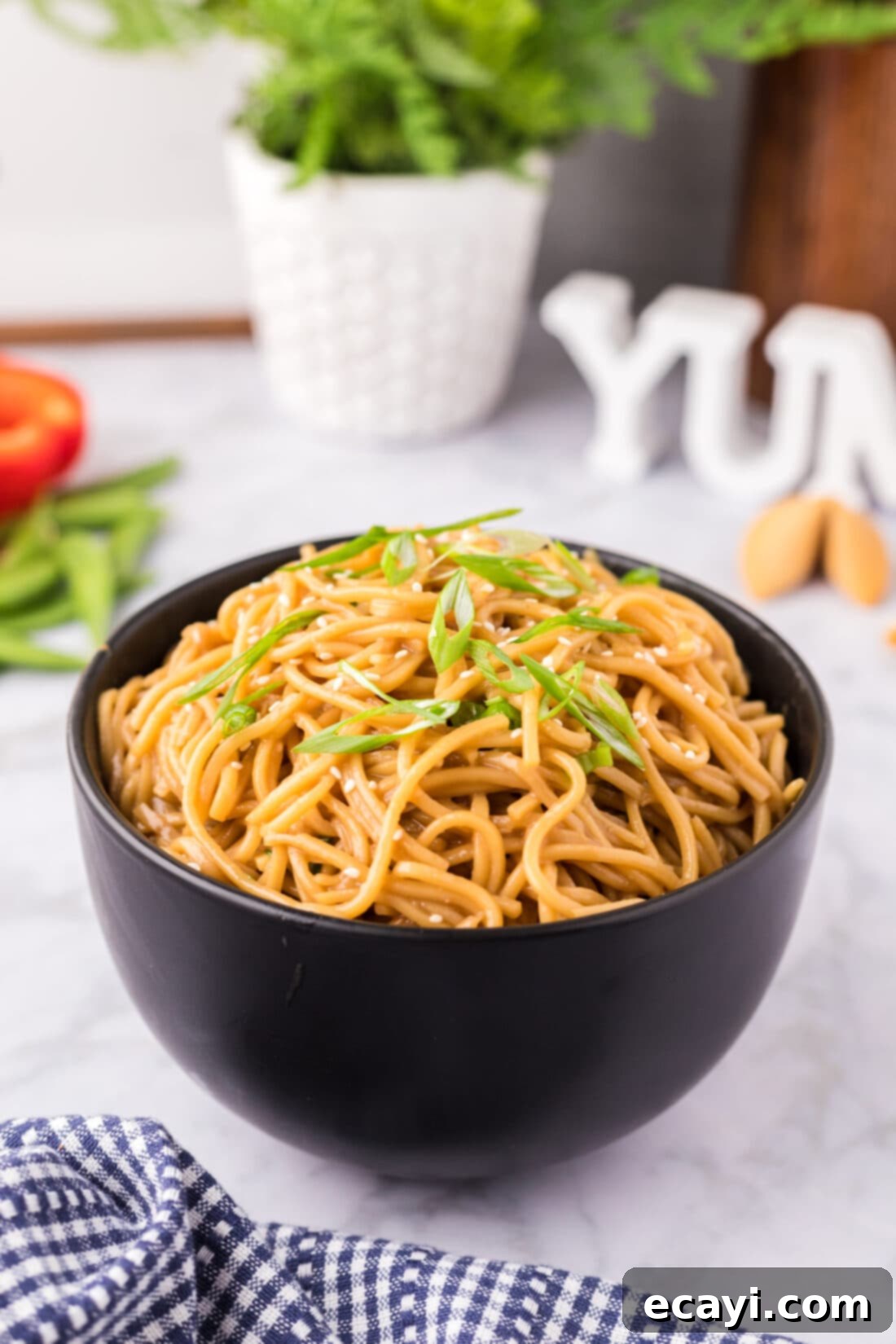
Unleash the Flavor: Versatile Serving Suggestions
The true magic of this homemade teriyaki sauce lies in its incredible versatility. It’s not just a sauce; it’s a flavor enhancer that can elevate a wide array of dishes. Here are just a few ideas to inspire your culinary adventures:
- Classic Glaze for Meats: Spoon it generously over cooked chicken, beef, pork, or lamb. It creates a beautiful, caramelized, sticky glaze that’s utterly delicious. It’s particularly fantastic on grilled or pan-seared chicken thighs, salmon fillets, or pork chops.
- Irresistible Marinade: Use it as a marinade for proteins before grilling, baking, or pan-frying. Allow chicken, shrimp, steak, or tofu to soak in the sauce for at least 30 minutes (or several hours for deeper flavor) before cooking. The honey and brown sugar will help tenderize and caramelize the exterior beautifully.
- Stir-Fry Sensation: This sauce is a natural fit for stir-fries. Add it towards the end of cooking your favorite combination of vegetables and protein (like chicken, shrimp, or beef) to coat everything in that signature sweet and savory flavor.
- Noodle Nirvana: Toss it with cooked ramen, udon, or rice noodles for a quick and satisfying meal. Add some sautéed vegetables and a sprinkle of sesame seeds for a complete dish, like our amazing teriyaki noodles.
- Dipping Delight: Serve it on the side as a dipping sauce for appetizers such as crispy chicken wings, spring rolls, dumplings, or even homemade chicken nuggets. Its robust flavor makes it a crowd-pleaser.
- Vegetarian & Vegan Friendly: Drizzle it over roasted vegetables like broccoli, asparagus, or bell peppers. It’s also fantastic with pan-fried tofu or tempeh, adding a burst of flavor to plant-based meals.
- Flavorful Bowl Base: Use it to season grain bowls. Combine cooked rice or quinoa with your choice of protein, fresh or roasted veggies, and a generous amount of this teriyaki sauce for a wholesome and delicious meal.
The choice is truly yours! Experiment with different applications and discover your favorite ways to incorporate this incredible homemade teriyaki sauce into your daily cooking.
Explore More Teriyaki Delights!
Once you’ve mastered this homemade teriyaki sauce, you’ll want to explore even more ways to enjoy its fantastic flavor. Check out some of our other favorite teriyaki-inspired recipes:
- Teriyaki Chicken
- Teriyaki Salmon
- Teriyaki Chicken and Rice
I love to bake and cook and share my kitchen experience with all of you! Remembering to come back each day can be tough, that’s why I offer a convenient newsletter every time a new recipe posts. Simply subscribe and start receiving your free daily recipes!
Making your own teriyaki sauce at home is a rewarding experience that pays off with unparalleled flavor and versatility. This easy recipe ensures you can create a delicious, fresh, and customizable sauce with minimal effort, transforming everyday meals into extraordinary culinary experiences. Give it a try – your taste buds will thank you!
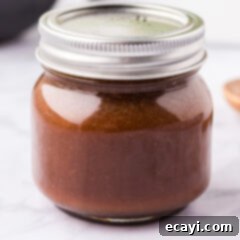
Homemade Teriyaki Sauce
IMPORTANT – There are often Frequently Asked Questions within the blog post that you may find helpful. Simply scroll back up to read them!
Print It
Pin It
Rate It
Save ItSaved!
Ingredients
- 1 cup low sodium soy sauce
- ¼ cup sesame oil
- ½ cup oyster sauce
- ¼ cup honey
- 3 Tablespoons rice vinegar
- 1 Tablespoon chopped ginger
- 2 Tablespoons minced garlic
- 1 Tablespoon brown sugar
To Prepare
- cornstarch
- water
Things You’ll Need
-
immersion blender
-
Measuring cups and spoons
Before You Begin
- This sauce can be kept in a sealed, airtight container in the refrigerator for up to 2 months.
- Our version of homemade teriyaki sauce uses both oyster sauce and soy sauce. Oyster sauce provides a thicker consistency and a slightly sweeter flavor than regular soy sauce. While you can substitute oyster sauce with more soy sauce, please note that the results may be a bit saltier and noticeably thinner than the sauce pictured. You may need to add a touch more sugar to compensate for the sweetness and adjust cornstarch amounts for thickening.
- Using low-sodium soy sauce is highly recommended to control the overall saltiness and allow other flavors to shine through.
Instructions
-
Combine all teriyaki sauce ingredients (low sodium soy sauce, sesame oil, oyster sauce, honey, rice vinegar, chopped ginger, minced garlic, and brown sugar) in a suitable blending container. Blend together thoroughly with an immersion blender until completely smooth. The sauce will be thin at this stage as cornstarch is NOT added yet.
-
Transfer the blended sauce to an airtight container or a clean glass jar. Store in the refrigerator for up to 2 months.
To Use and Thicken
-
To use the sauce, add about 1/2 cup of your homemade teriyaki sauce to cooked meat or noodles in a skillet (this amount is generally suitable for a family-sized meal).
To thicken the sauce to a glaze consistency, prepare a cornstarch slurry: add one tablespoon of cornstarch to about 1/4 cup of cold water and whisk or stir until smooth. Pour this slurry into the simmering sauce in the skillet and continue to simmer, stirring frequently, until the sauce reaches your desired thickened, glossy consistency.
Nutrition
The recipes on this blog are tested with a conventional gas oven and gas stovetop. It’s important to note that some ovens, especially as they age, can cook and bake inconsistently. Using an inexpensive oven thermometer can assure you that your oven is truly heating to the proper temperature. If you use a toaster oven or countertop oven, please keep in mind that they may not distribute heat the same as a conventional full sized oven and you may need to adjust your cooking/baking times. In the case of recipes made with a pressure cooker, air fryer, slow cooker, or other appliance, a link to the appliances we use is listed within each respective recipe. For baking recipes where measurements are given by weight, please note that results may not be the same if cups are used instead, and we can’t guarantee success with that method.
